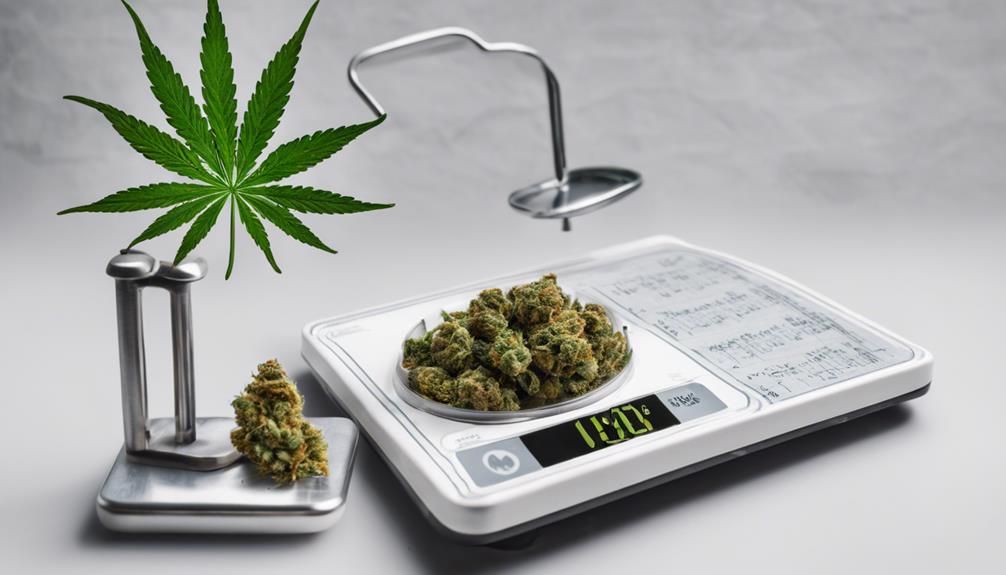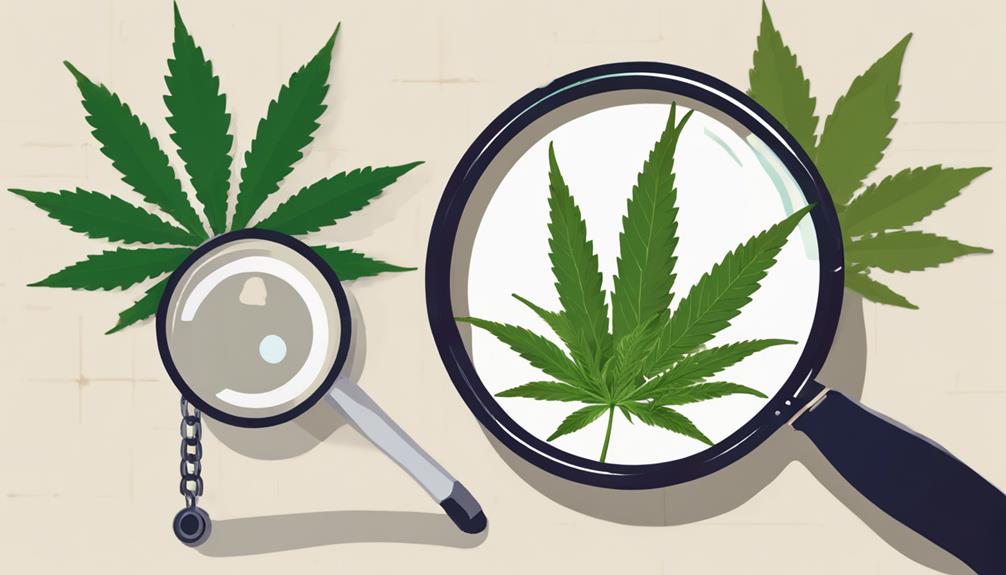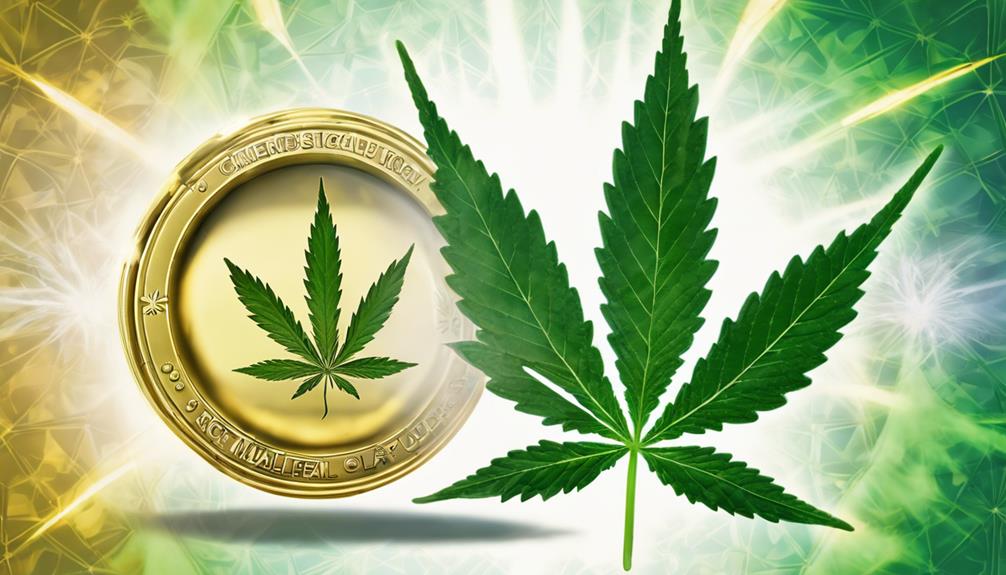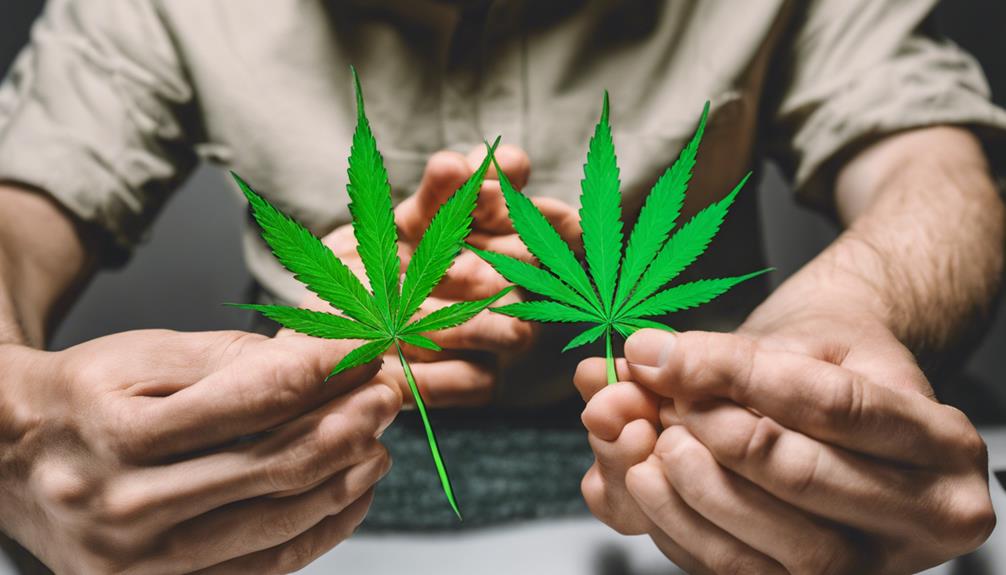You’ve likely noticed the difference in potency between recreational cannabis and its medical counterpart. Have you ever wondered why this is? It’s not by chance. Regulatory constraints limit the concentration of cannabinoids in recreational strains, while medical-grade cannabis is formulated to deliver potent therapeutic benefits. Recreational cannabis aims for a casual experience, while medical products cater to specific health needs. So, what might this potency gap mean for you as a consumer? That’s a question worth exploring further.
Understanding Cannabis Potency

A significant majority of people may not fully understand cannabis strength. However, if you’re planning to serve others in the cannabis industry, it’s necessary that you do. Cannabis strength refers to the concentration of cannabinoids, which are the active components in cannabis that determine its effect on the human body. The strength level can vary greatly between different strains and products.
Extraction methods play a crucial role in determining these strength levels. Two common methods are solvent-based and solventless extraction. The former uses chemical solvents like ethanol or butane to strip the cannabinoids from the plant material; however, this method can leave residual solvents affecting the purity and strength of the final product.
In contrast, solventless extraction methods such as heat and pressure or water yield a cleaner product but may not extract as much of the cannabinoids resulting in lower strength levels.
Understanding these concepts is vital when comparing the strength levels of recreational cannabis and medical products. The extraction method used, strain selection, and processing all contribute to the final product’s strength. As someone keen to serve others in this field, it’s essential that you’re able to explain these factors to your customers or clients.
Differences in Growing Conditions
Beyond the extraction process and the inherent strength of different strains, the growing conditions of the cannabis plant can greatly impact the potency and quality of the final product.
Environmental factors and cultivation methods play a crucial role in determining the potency of cannabis, regardless if it’s grown for recreational or medical use. Let’s delve into these two elements.
Environmental factors like temperature, light, and humidity must be carefully managed. It’s important to understand that cannabis is a bioaccumulator, meaning it absorbs and stores substances from its surroundings. A poor environment can lead to a lower-quality product. For instance, excessive heat can damage the plant’s trichomes reducing the potency of the cannabis.
Cultivation methods also have a significant impact. Organic farming techniques can enhance the plant’s potency by promoting a healthy soil ecosystem leading to a more nutrient-rich plant. However, understanding how organic farming works is not as simple as just using organic fertilizer; you’ve got to understand the science behind it –the intricate balance of nutrients required for optimal growth.
In essence, cannabis potency isn’t just about strain selection or extraction process but also about growing conditions. It requires attention to detail, expertise, and care.
Regulatory Restrictions on Recreational Cannabis

The growing conditions of cannabis play an essential role in its potency; however, it’s equally important to consider the regulatory restrictions on recreational cannabis. Government regulations impose stringent controls on the production, sale, and use of recreational cannabis. These laws limit the concentration of active ingredients, namely THC and CBD, in recreational products.
Market limitations also play a significant role in the potency disparity between recreational and medical cannabis. Because recreational cannabis is a consumer-focused product, manufacturers often prioritize pleasing the consumer’s palette over maximizing potency. Flavorful strains with lower potency levels tend to dominate the market sacrificing potential therapeutic benefits for a more enjoyable user experience.
Legal restrictions on where, when, and how much recreational cannabis a person can purchase and consume also influence consumers’ choices. These restrictions can inadvertently encourage consumers to opt for less potent strains further widening the potency gap between recreational and medical cannabis.
Medical Cannabis’ Higher THC Levels
In contrast to recreational strains, medical cannabis typically contains higher levels of THC –the primary psychoactive component in cannabis– which serves an essential role in its medicinal benefits. It’s not just about getting high; it’s about serving a purpose.
The higher THC levels in medical cannabis can be extremely beneficial for patients suffering from various conditions ranging from chronic pain to debilitating diseases such as cancer, glaucoma, and epilepsy. The higher THC concentration can help alleviate symptoms providing relief where conventional medicine may fall short.
However, it’s not just about THC concentration. The therapeutic potential of medical cannabis lies in its unique blend of cannabinoids, terpenes, and flavonoids –known as the ‘entourage effect.’ This combination is believed to enhance the medicinal properties of cannabis offering a broader spectrum of benefits than THC alone.
It’s important to recognize that while both types come from the same plant their cultivation methods composition uses differ significantly. The higher THC levels in medical cannabis aren’t for kicks; they’re for health. Serving others by addressing their health needs is the primary objective of medical cannabis.
Intended Use: Medical Vs Recreational

Drawing a line between the intended uses of medical and recreational cannabis further illustrates their differences. Medical cannabis, as the name implies, serves therapeutic purposes. It’s used in managing chronic pain, reducing nausea during chemotherapy, or controlling seizures in certain neurological disorders. The medical benefits are undeniable and have been increasingly recognized by the medical community.
On the other hand, recreational use denotes a different intention. The goal isn’t necessarily to treat a health condition but to induce a state of relaxation euphoria or altered perception. Recreational cannabis is commonly used for personal enjoyment or social interaction.
The desired effects drive the potency and composition of cannabis products. Medical cannabis often contains higher levels of certain cannabinoids to deliver specific therapeutic effects.
Conversely, recreational cannabis typically has higher concentrations of THC –the psychoactive compound that produces the ‘high’ sensation.
Understanding these differences is vital especially for those in the medical and caregiving community as it aids in making informed choices ensuring appropriate use of these products and ultimately better serving patients and recreational users alike.
The Role of Cannabinoids and Terpenes
To fully grasp the differences between recreational and medical cannabis understanding cannabinoids’ role terpenes is vital. These naturally occurring compounds in cannabis plants contribute to its therapeutic effects.
In medical cannabis cannabinoid synergy –where various cannabinoids interact to enhance each other’s beneficial effects– is intentionally harnessed. This synergy results in a more potent and effective therapeutic product. Recreational cannabis, on the other hand, often lacks this intentional combination of cannabinoids focusing more on THC content for its psychoactive effects.
Terpenes, the aromatic compounds responsible for different cannabis strains’ distinct scents also play an important role. They aren’t just about aroma though. Different terpene profiles can influence the overall effects of cannabis enhancing certain properties and mitigating others.
In medical cannabis products specific terpene profiles are chosen to complement the cannabinoid content working together to provide targeted relief for specific symptoms or conditions. Recreational cannabis doesn’t have this level of precision with terpene profiles often overlooked in favor of high THC levels.
This understanding of cannabinoids and terpenes and their deliberate use is what sets medical cannabis apart.
Choosing the Right Product for You

Exploring the world of cannabis products can be challenging especially with today’s multitude of options. The key to navigating this intricate landscape is understanding your personal preferences and medical suggestions.
Personal preferences play a significant role in determining the right product. Consider factors such as method of consumption desired effects and potency level that best suits your needs. For instance if you prefer a slower release of effects edibles or capsules may be more appropriate than vaping.
Medical suggestions are equally important. Different strains have varying cannabinoid and terpene profiles each offering unique therapeutic benefits. A healthcare professional can guide you to products with the most suitable profile for your condition.
It’s essential to note that medical cannabis products often contain higher potency levels making them more effective for therapeutic use than recreational alternatives.
Conclusion
So, you thought recreational cannabis would get you higher? Ironically, it’s medical cannabis that packs a punch thanks to fewer regulatory constraints and a focus on therapeutic value. But remember, it’s not just about potency. The balance of cannabinoids and terpenes play a vital role too. So whether you seek relief or recreation understanding these differences will help you choose the right product. After all, it’s science not just smoke and mirrors.
If you’re curious to learn more about the ins and outs of medical cannabis why not give us a visit at Fells Point Cannabis Docs of Maryland? Our friendly knowledgeable team is always here to help. If you prefer, you can also give us a call at (410) 401-4200. We’re excited to share our expertise and help you navigate your cannabis journey. We look forward to hearing from you!
